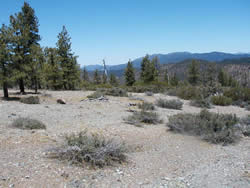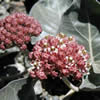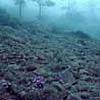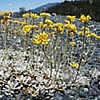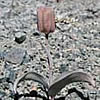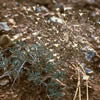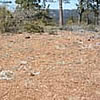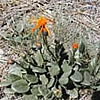- Forest Service Home
- Celebrating Wildflowers
- Home
- About Us
- News & Events
- Wildflower Viewing Areas
- Wildflower Ethics
- Forest Service Regions
- Just For Kids
- Teacher Resources
- Pollinators
- Native Gardening
- Native Plant Materials
- Invasive Plants
- Rare Plants
- Beauty of It All
- Interesting Plants
- Unique Communities
- Ethnobotany
- Special Features
- Wildflower Links
- Contact Us
USDA Forest Service Celebrating Wildflowers
|
|
|
Serpentine BarrensSerpentine barrens represent the most xeric natural community that occurs in the serpentine environs of the Klamath-Siskiyou region. Two types of serpentine barrens have been described.
Serpentine barrens occur as small, one to two acres or larger, openings surrounded by serpentine conifer or woodland communities. Outcrops of exposed bedrock are commonly found in nested in the barren community. Serpentine barrens represent the harshest serpentine community. The soils are extremely thin and rocky lying directly upon the parent material (most commonly serpentinite). These soils contain a very high amount of magnesium, very low amount calcium and other soil nutrients and may have significant amounts of nickel and other heavy metals. Serpentines barrens occur on south to southwest to west aspect, which is characterized by a warmer temperature than the surrounding vegetation and highly xeric soils. The environmental extremes of serpentine barrens support a very high percentage of plants considered narrow endemics. Kruckeberg (1999) attributes this high percentage of narrow endemics to the severe chemical and physical extremes of the serpentine barrens and their discontinuity in the landscape. In fact, serpentine barrens contain more narrow endemic plants than any other serpentine natural community in the Klamath-Siskiyou region; and as such, the most rare plants (Jimerson, et. al. 1995). Represented plant genera associated with the harshest of serpentine communities include Arabis, Eriogonum, Sedum, and Streptanthus. Photo Gallery
Our thanks to CalPhotos and its many contributors for many of the pictures in this photo gallery. Resources and References
|
|
| NOTE: PDF format links require the Adobe Acrobat Reader to view. | |
| top | Disclaimers | FOIA | Privacy Policy | Quality of Information | Photo Credits & Use |
Location: http://www.fs.fed.us/wildflowers/communities/serpentines/communities/barrens.shtml
Last modified: Wednesday, 13-Oct-2010 14:30:56 EDT
